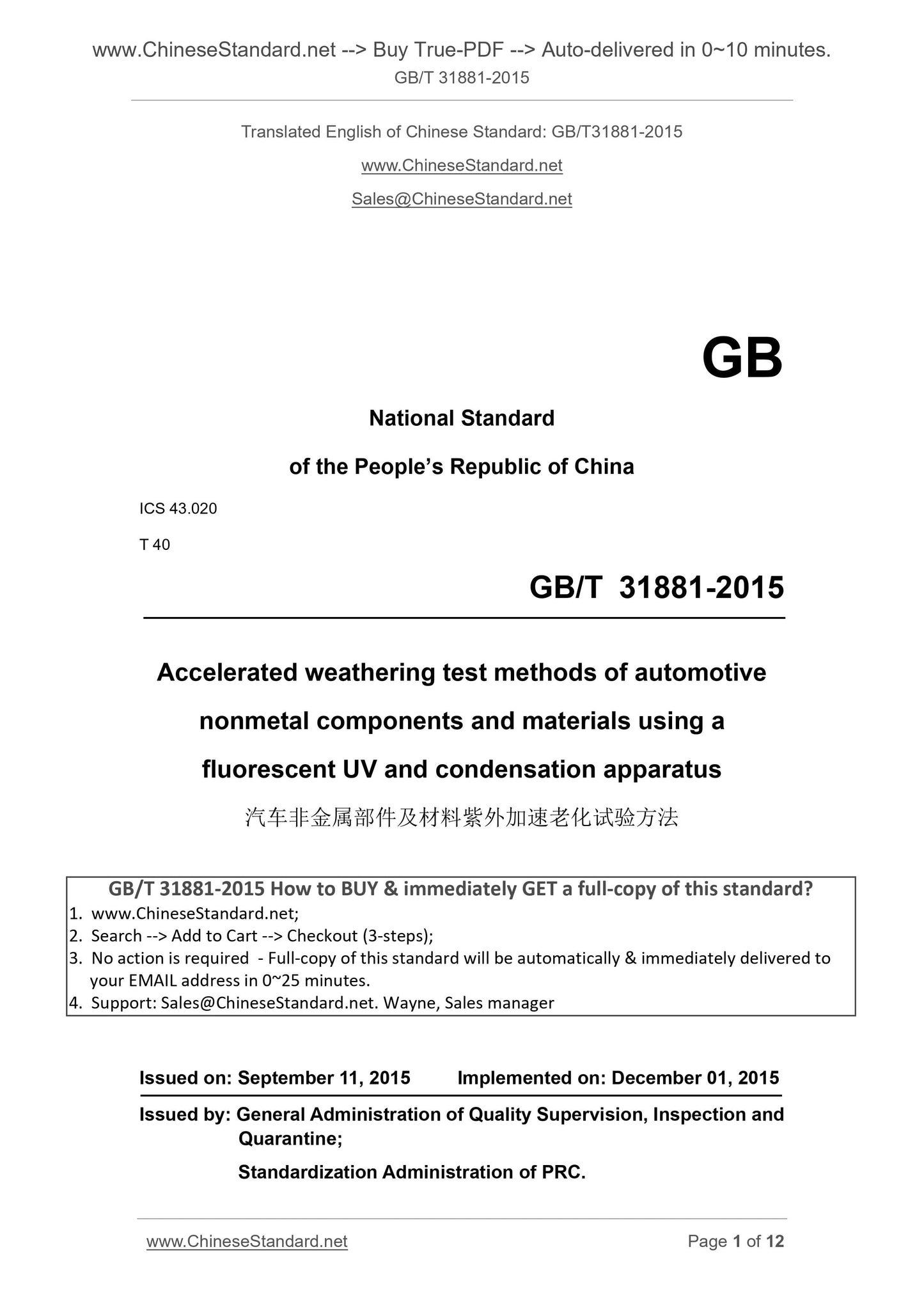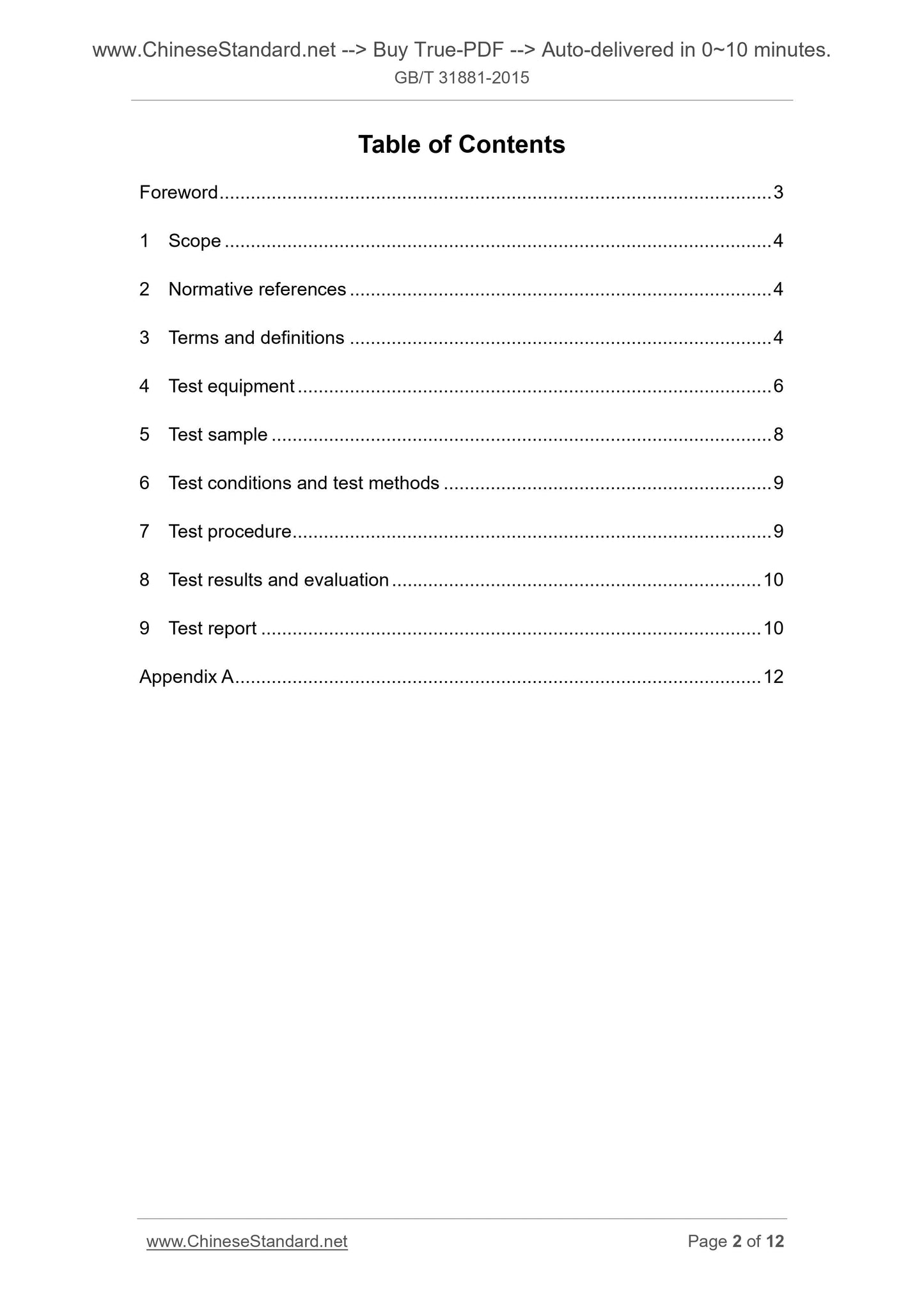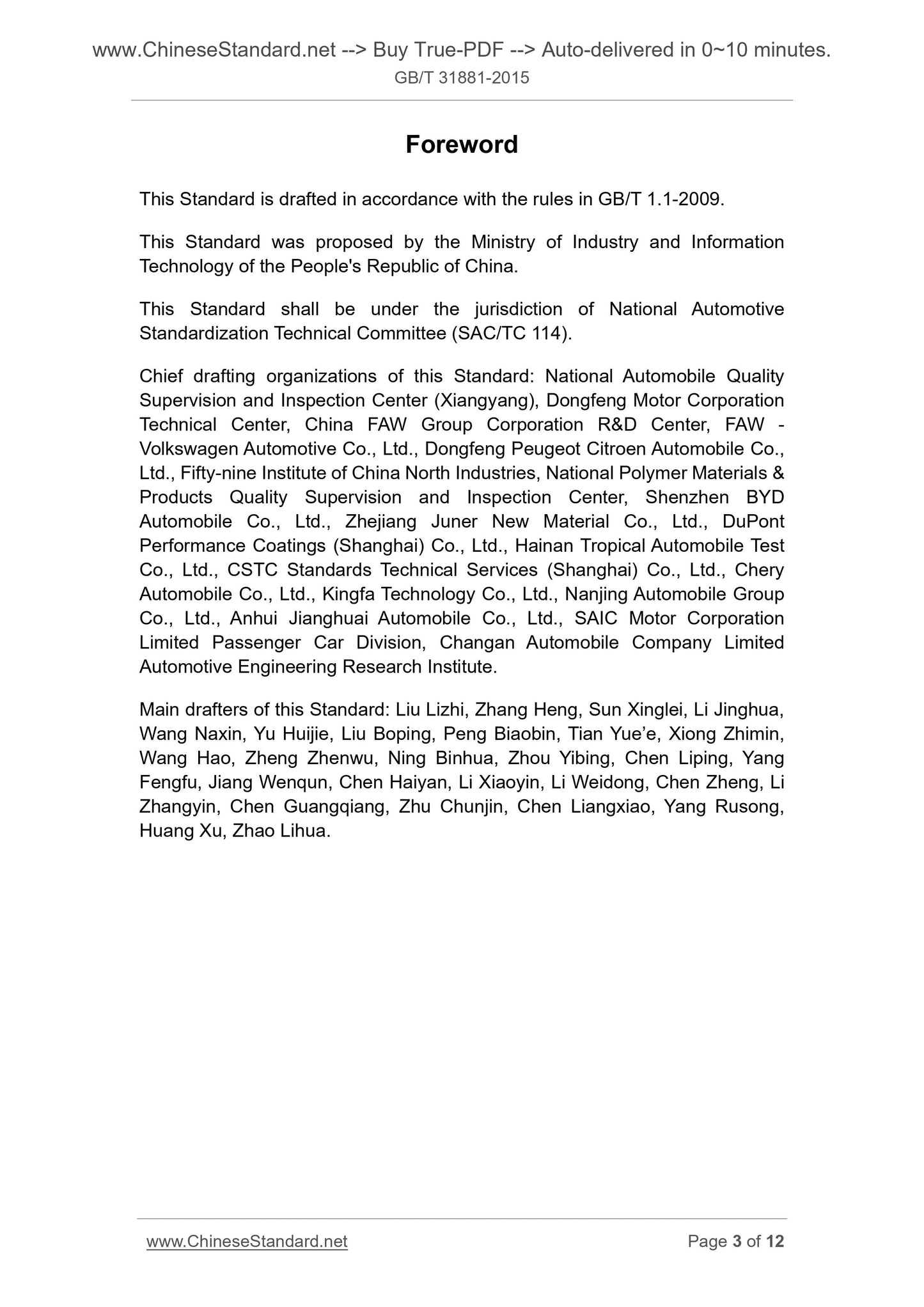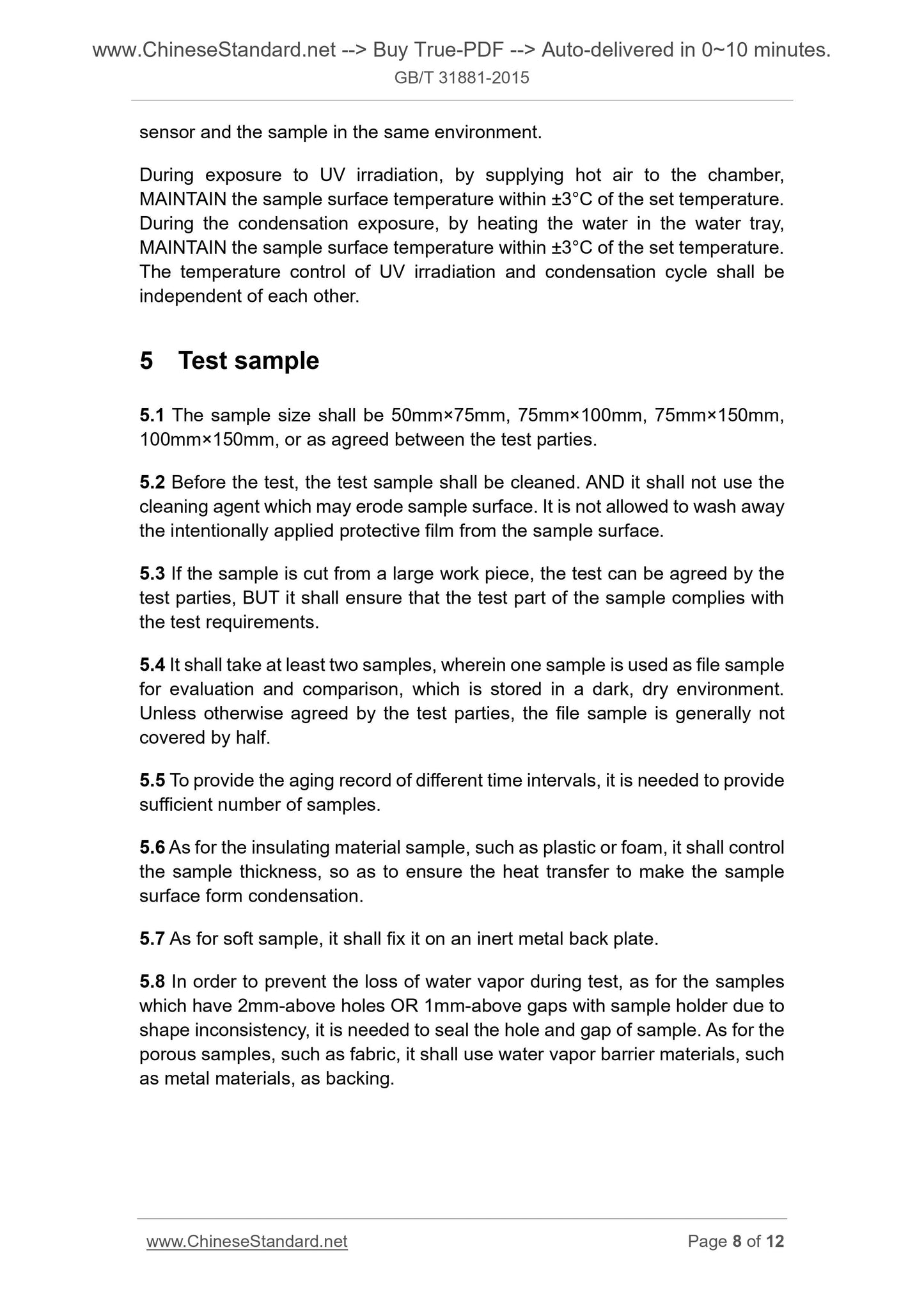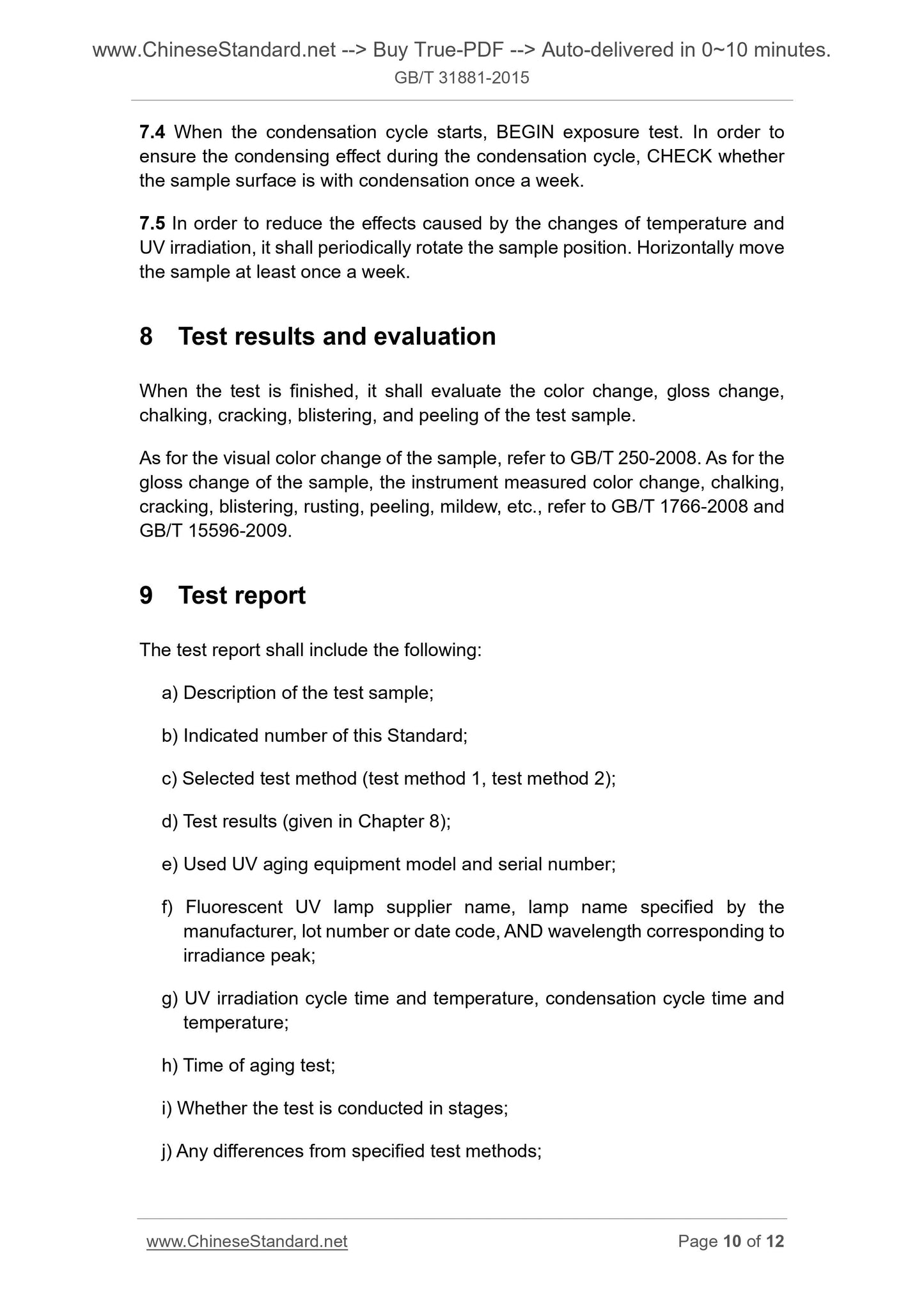1
/
of
7
www.ChineseStandard.us -- Field Test Asia Pte. Ltd.
GB/T 31881-2015 English PDF (GB/T31881-2015)
GB/T 31881-2015 English PDF (GB/T31881-2015)
Regular price
$90.00
Regular price
Sale price
$90.00
Unit price
/
per
Shipping calculated at checkout.
Couldn't load pickup availability
GB/T 31881-2015: Accelerated weathering test methods of automotive nonmetal components and materials using a fluorescent UV and condensation apparatus
Delivery: 9 seconds. Download (and Email) true-PDF + Invoice.Get Quotation: Click GB/T 31881-2015 (Self-service in 1-minute)
Newer / historical versions: GB/T 31881-2015
Preview True-PDF
Scope
This Standard specifies the test methods and evaluation methods to use UVaging test equipment to conduct accelerated aging against automotive non-
metallic parts and materials.
This Standard applies to automotive plastics, rubber, coatings, adhesives, and
other non-metallic parts and materials.
Basic Data
| Standard ID | GB/T 31881-2015 (GB/T31881-2015) |
| Description (Translated English) | Accelerated weathering test methods of automotive nonmetal components and materials using a fluorescent UV and condensation apparatus |
| Sector / Industry | National Standard (Recommended) |
| Classification of Chinese Standard | T40 |
| Classification of International Standard | 43.020 |
| Word Count Estimation | 9,993 |
| Date of Issue | 2015-09-11 |
| Date of Implementation | 2015-12-01 |
| Quoted Standard | GB/T 250-2008; GB/T 1766-2008; GB/T 15596-2009; GB/T 16422.3 |
| Regulation (derived from) | National Standard Announcement 2015 No.25 |
| Issuing agency(ies) | General Administration of Quality Supervision, Inspection and Quarantine of the People's Republic of China, Standardization Administration of the People's Republic of China |
| Summary | This Standard specifies the test methods for the application of UV aging test equipment and non-metallic parts of the car accelerated aging of materials and evaluation methods. This Standard applies to child car with plastic, rubber, coatings, adhesives, and other non-metallic parts and materials. |
Share
